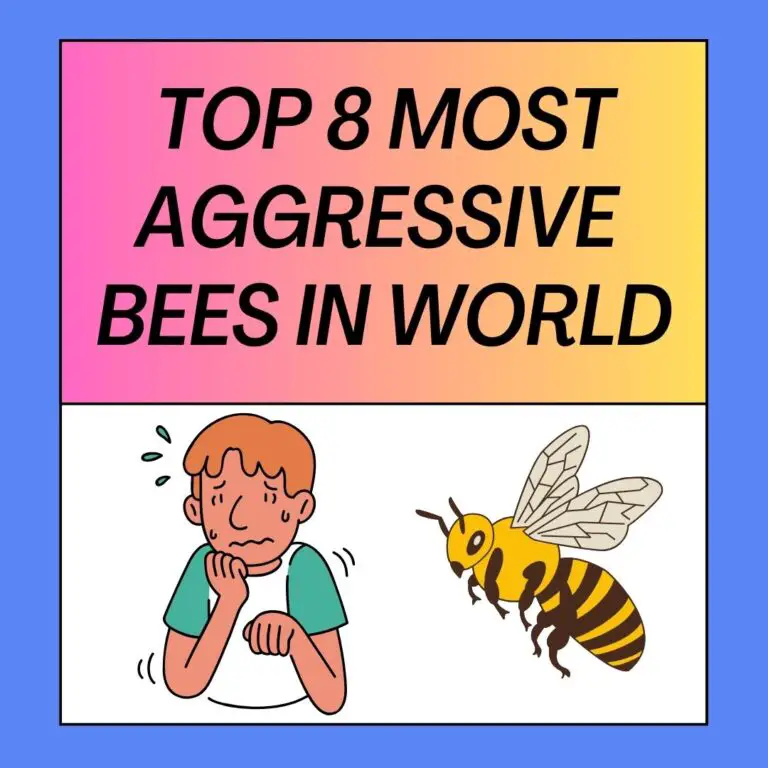
To boost their chances of success, more seasoned beekeepers might choose to maintain even more hives than two. Most beekeepers believe that 2 to 5 hives are the optimum amount of hives for a home beekeeper if there is such a thing. Naturally, you’ll also need ample room. Although you’ll likely need at least 500 beehives to make a respectable income from bees, an enterprise is considered commercial if it has more than 300 hives. A more profitable return on investment may be obtained by using them for the production of honey and as a pollination service for farmers.
Factors to Consider
- Location: The availability of forage and the length of the beekeeping season in your area can significantly impact honey production. In areas with abundant floral resources and a long season, you might need fewer hives to make a living compared to regions with limited forage.
- Type of Honey: The type of honey you produce can affect your income. Some honey varieties, like Manuka honey, command premium prices, while others are more common and less valuable.
- Yield per Hive: On average, a healthy beehive can produce 50-100 pounds of honey per year, but this can vary widely. High-yield hives might require less overall maintenance and fewer hives to make a living.
- Marketing and Sales: Your ability to market and sell your honey and other bee-related products, such as beeswax and pollen, is crucial. Establishing strong distribution channels, including local markets, stores, or online sales, can impact your income.
- Production Costs: Consider the costs associated with beekeeping, such as hive equipment, beekeeping tools, protective gear, and feeding bees during lean seasons. You’ll need to balance these costs against your potential earnings.
- Goals and Lifestyle: Your financial goals and the lifestyle you desire will also influence the number of beehives you need. Some beekeepers are content with a modest income to supplement other work or hobbies, while others aim for a full-time income.
- Diversification: In addition to honey, you can generate income through other bee-related products, such as beeswax candles, pollen, royal jelly, or offering pollination services to local farmers. Diversifying your bee-related income streams can reduce your reliance on honey production alone.
- Beekeeping Experience: Your level of experience and expertise in beekeeping can impact your hive’s productivity. Experienced beekeepers often manage their hives more effectively and can prevent or address issues that may reduce honey production.
- Local Regulations: Check if there are any local regulations or restrictions on the number of beehives you can keep, especially if you’re in a residential area.
- Environmental Considerations: Be mindful of environmental sustainability. Overloading an area with too many hives can deplete local forage and harm the bee population.
How Do Beekeepers Make Money?
- Beekeepers can generate income through various means, including:
- Honey Sales: Selling honey to local markets, stores, or online.
- Pollination Services: Renting out hives to farmers for crop pollination.
- Bee Product Sales: Selling beeswax, propolis, pollen, royal jelly, and other hive products.
- Beekeeping Equipment Sales: Selling beekeeping supplies and equipment.
- Bee Removal Services: Removing and relocating unwanted bee swarms.
- Educational Workshops: Conducting beekeeping classes or workshops.
Beekeeping income is influenced by location, bee health, market demand, and the beekeeper’s business acumen. Successful beekeepers often diversify their income streams to mitigate risks and maximize profitability.
Bee Farming or beekeeping From Scratch
I am starting beekeeping, whether as a hobby or for profit, can be an exciting and rewarding endeavor.
Here’s a step-by-step guide on how to begin beekeeping, including how many beehives to start with and tips for making it profitable:
1. Learn About Beekeeping:
- Start by educating yourself about beekeeping. Read books, take online courses, or attend local beekeeping classes. Understanding bee biology, hive management, and bee health is essential.
2. Choose a Suitable Location:
- Find a suitable location for your beehives. Ensure it offers adequate forage (flowers and plants) for your bees and complies with local zoning regulations. Bees need a diverse range of flowers for nectar and pollen.
3. Acquire the Necessary Equipment:
- Invest in the necessary beekeeping equipment, including beehives, frames, bee suits, gloves, hive tools, smokers, and feeders. The number of hives you start with depends on your goals.
4. Start with 2-3 Hives:
- For beginners, it’s recommended to start with 2-3 beehives. This allows you to gain experience and manage your hives effectively without becoming overwhelmed. You can always expand your apiary as you become more skilled.
5. Obtain Bees:
- Acquire honey bees for your hives. You can purchase packages of bees with a mated queen or nucleus colonies (nucs). Ordering from a reputable supplier is crucial to ensure healthy and disease-free bees.
6. Set Up Your Hives:
- Assemble your beehives and place them in your chosen location. Ensure they have access to water nearby.
7. Care for Your Bees:
- Regular hive inspections are essential. Check for diseases, pests, and the overall health of your colony. Learn how to manage common issues like varroa mites and foulbrood.
8. Harvest Honey:
- Depending on your location and the strength of your colonies, you can harvest honey in your first year. Be sure to leave enough honey for your bees to survive the winter.
9. Expand Gradually:
- If your goal is to make beekeeping profitable, consider expanding your apiary over time. Adding more hives can increase honey production and other bee-related products.
10. Marketing and Sales: – Develop a marketing plan for selling your honey and other bee-related products. This might include local farmers’ markets, online sales, or partnering with local stores.
11. Keep Records: – Maintain detailed records of your hive inspections, hive health, and honey production. This information is valuable for tracking your apiary’s progress and identifying improvement areas.
12. Be Prepared for Challenges: – Beekeeping comes with challenges, including hive losses, diseases, and unpredictable weather. Be prepared to learn from setbacks and adapt your beekeeping practices.
13. Join a Beekeeping Association: – Consider joining a local beekeeping association or club. Networking with experienced beekeepers can provide valuable guidance and support.
14. Beekeeping for Profit: – Making beekeeping profitable involves effective hive management, maximizing honey production, diversifying your bee-related products (e.g., beeswax, pollen, royal jelly), and effective marketing. Start small, learn from your experiences, and gradually scale up to increase your income.
Remember that beekeeping is not just about honey; it’s also about supporting pollinators and contributing to a healthy ecosystem. Bees play a vital role in pollinating crops and wild plants, so beekeeping is a valuable contribution to agriculture and the environment.
Related Faq’s About Beekeeping
1. How Many Beehives in One Location?
- The ideal number of beehives in one location depends on factors such as available forage, the strength of your colonies, and local regulations. Commercial beekeepers may have hundreds or even thousands of hives in one location, while hobbyists may keep just a few.
2. How Much Money Does a Beekeeper Make From One Hive?
- The income from one hive can vary. On average, a healthy hive can produce around 50 to 100 pounds (22 to 45 kilograms) of honey per year. The selling price of honey varies by region and quality but may range from $5 to $10 per pound. So, a single hive could potentially generate $250 to $1,000 in honey sales per year.
3. How Much Do Beekeepers Make Per Hour?
- Beekeepers’ earnings per hour can vary widely. Many beekeepers have other jobs or businesses alongside beekeeping. The hourly income from beekeeping activities like hive inspections, honey extraction, and hive maintenance depends on factors like the number of hives and the scale of beekeeping operations.
4. How Much Do Beekeepers Make Per Hive?
- Beekeepers’ earnings per hive depend on honey production, pollination contracts (if they provide pollination services), and sales of other bee-related products. It’s not uncommon for commercial beekeepers to make a few hundred to over a thousand dollars per hive per year.
5. How Many Bee Hives Per Acre?
- The number of beehives per acre can vary based on factors like the type of crops being pollinated, the strength of the hives, and the availability of forage. In orchards, for example, it’s common to have 1-2 hives per acre, while in vegetable fields, you might need 3-5 hives per acre.
6. How Much Do Beekeepers Make Per Year?
- Beekeepers’ annual earnings vary widely. Commercial beekeepers with hundreds or thousands of hives may earn a substantial income, potentially in the tens of thousands to hundreds of thousands of dollars per year. Hobbyist beekeepers may make a few thousand dollars annually from honey sales and other bee products.
- Each year, a single bee colony may generate 60 to 100 pounds of honey. In its lifespan, the typical worker bee produces just approximately 1/12 teaspoon of honey. A vigorous, healthy hive will have a population of roughly 50,000 bees at the peak of the honey-gathering season.
7. How Much Is a Beehive Worth?
- The value of a beehive depends on its condition and equipment. A complete beehive with bees, frames, and other equipment can range from $150 to $300 or more, depending on the type of hive (Langstroth, top-bar, etc.) and whether it includes bees.
8. How Many Hives in an Apiary?
- The number of hives in an apiary can vary widely. Small-scale beekeepers may have just a few hives, while commercial beekeepers may manage hundreds or thousands of hives in a single apiary.
Summary
It’s advisable to start small, gain experience, and gradually expand your beekeeping operation as you become more proficient and understand your local conditions. Many beekeepers start with a few hives and grow their apiary over time. Additionally, joining a local beekeeping association or seeking advice from experienced beekeepers in your area can provide valuable insights and guidance for your specific circumstances. Ultimately, the number of beehives needed to make a living will vary from person to person, and careful planning is essential for success in beekeeping as a livelihood.






